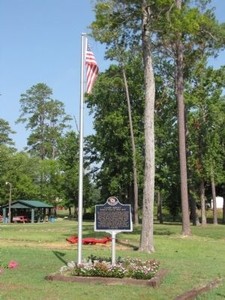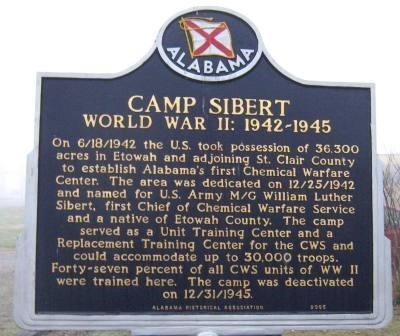Camp Sibert Marker
Introduction
Text-to-speech Audio
Images
Camp Sibert

Camp Sibert as seen across Gilbert Ferry Road.

Camp Sibert Marker

Backstory and Context
Text-to-speech Audio
The camp served as a unit training center and a replacement training center for the Chemical Warfare Service. Camp Sibert at times housed as few as 5,000 troops, but could accommodate as many as 30,000.
At Camp Sibert, the CWS conducted various training exercises such as smoke-screen defense, chemical decontamination and chemical depot maintenance. Troops equipped the camp with chemical field-filling stations, a toxic gas yard and decontamination areas. The Army also constructed an airfield for the simulation of chemical air attacks against the troops.
Mustard gas and other live chemical agents were used during military training at Camp Sibert. The 4.2-inch mortar was the weapon most often used, and the ordinance most often found lurking under the surface during post-war clean-ups, some of them live. Since the war ended 67 years ago, the clean-up and disposal of these hazardous materials have been farmed out to various companies who specialize in such work under the auspices of various government agencies. From the online articles I’ve read, there does not appear to have been any accidents during these clean-up and disposal efforts. Needless to say, this vast area covering parts of two large counties is now real estate which include homes and businesses.
The
camp contributed much to the Etowah County economy. Hundreds of civilian
jobs were created, and the thousands of men stationed at the camp spent
lots of money in Gadsden. During its brief existence, the chemical
warfare training facility had some rather distinguished troops stationed
here, including boxer Joe Louis and entertainers Mickey Rooney and Red
Skelton.
